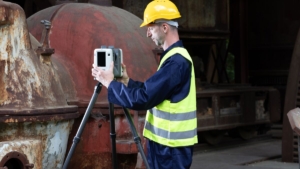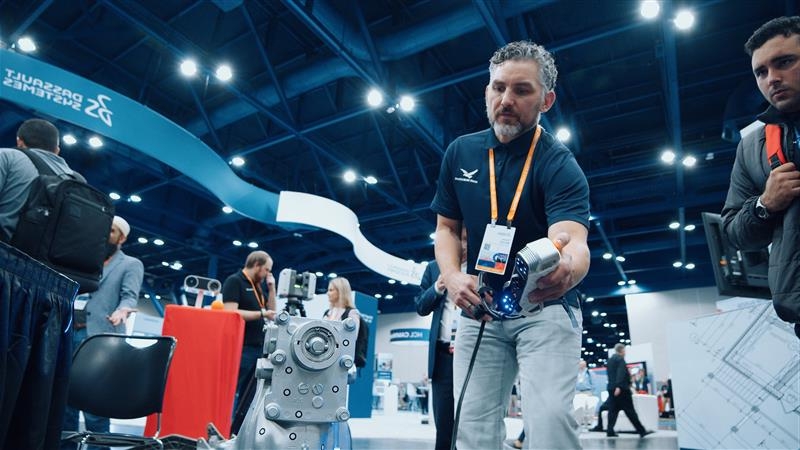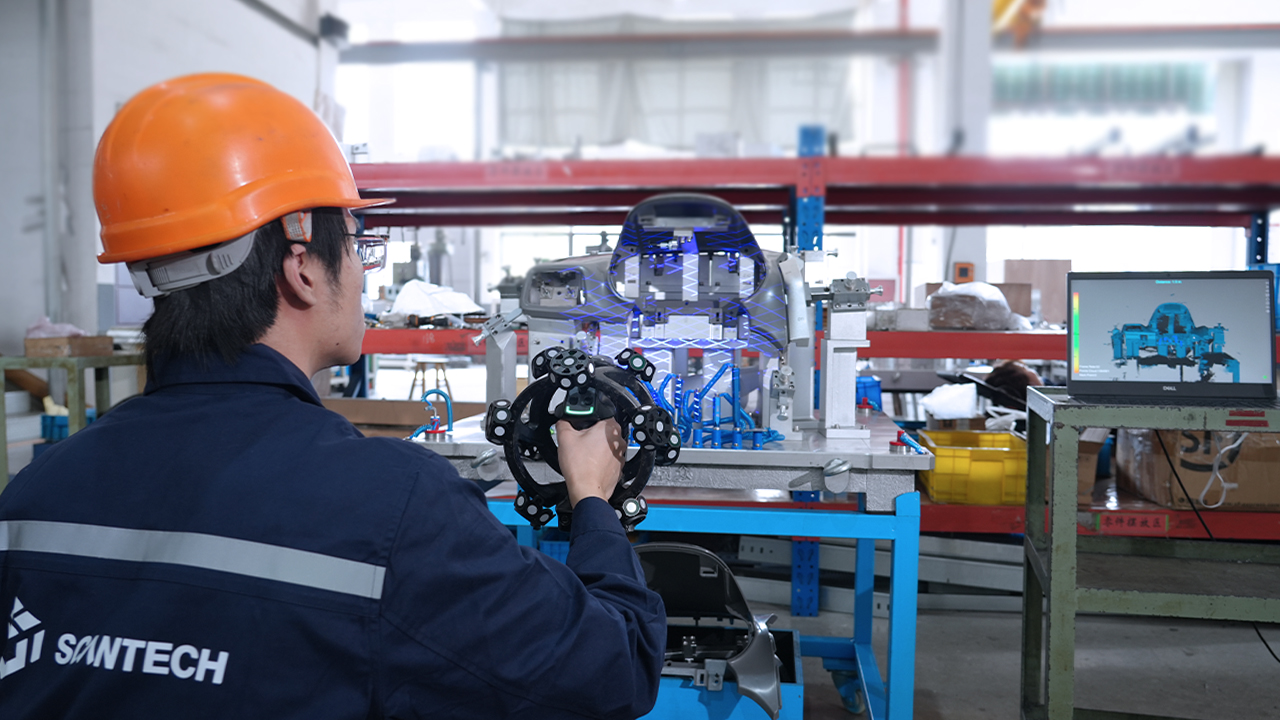The Artec Ray II delivers three key components—speed, precision, and range. The scanner has helped thousands of engineers digitize items for quality control, reverse engineering, and critical dimensions for site planning.
After successfully launching its first LiDAR scanner, Artec3D introduced the Artec Ray II. This scanner leverages what worked in the previous version and evolves from it. The result is long-range wireless LiDAR scanning that’s easier and faster than ever. With a simple and easy-to-learn setup, the Artec Ray II can scan a diameter of 260 meters (about 853.02 feet) in under 3 minutes.
Improved Speed and Battery Life in the Artec Ray II
The Ray II has vastly enhanced the two most significant time factors in LiDAR: speed and battery life. Two spaces for batteries, along with an outlet plug, allow for hours of scan time. Two additional batteries and a recharging station make swapping hot batteries for long jobs in remote areas quick.
Unmatched speed allows a dome scan to finish in 1.7 minutes with an accuracy of 1.9mm at a 10-meter distance. With adjustable resolution settings, you can triple the points captured for high-quality inspection and still finish scanning in under 2 minutes.
Additionally, 36MP cameras on the scanner capture rich colors. Now, you can create amazing HDR Textures or inspect the markings of large items and sites. The process only adds one minute to the workflow and automatically maps to the data. If you want to add richer color from a DSLR camera, this is also possible. Learn more about applying photo textures within Artec Studio.
A 250GB industrial-grade USB drive stores all scans, which ensures they are always accessible and ready for offloading.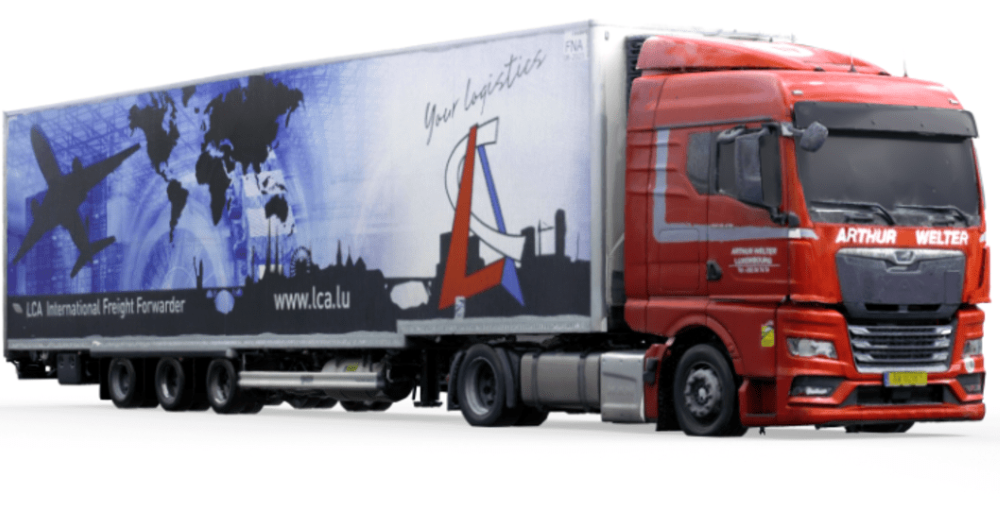
Start Scanning with One Touch
The onboard touch-screen makes operation effortless and allows you to start scans and change settings with a tap.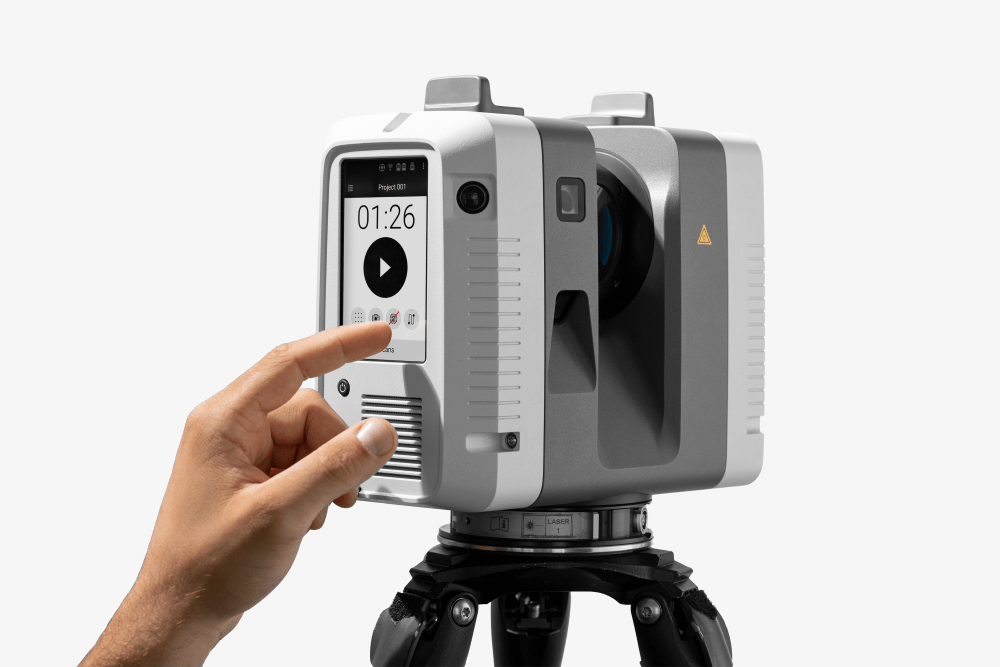
Double Scan
Double scan runs a second scan from the same position and filters out moving objects and those that differ between scans. Shutting down a job site is rarely an option, but the Ray’s double scan function ensures clean, right-sized scans without painstaking manual cleanup.
VIS: Integrated Compass & GPS
The VIS (Visual Inertial System) includes an integrated compass and GPS. These elements eliminate the need to manually align scans or perform tilt correction, a tedious and time-consuming step in traditional LiDAR processing.
How Engineers Are Using the Ray II
The Ray II supports many industries. Let’s review some popular use cases.
Automotive
Small and large vehicles are scannable in minutes. The scanner is perfect for reverse engineering, inspecting installations, and verifying dimensions.
Industrial Manufacturing
Streamline the planning of factories, tools, and piping by scanning a space. The data captured provides all the necessary information to measure and design around.
Civil Engineering
Digitize bridges, roads, construction sites, and topography easily due to the 130-meter (about 426.51 feet) from-scanner range of the Artec Ray II. With the ability to work in many environments, you could use the Artec Ray II inside dark locations such as tunnels without impacting quality.
Q/A
Metrology grade accuracy and a high level of resolution make this scanner ideal for inspecting large parts found in different industries. Check for wear-over-time and size verification using millions of data points.
Heritage Preservation
With vibrant color and a non-contact form of scanning, the Artec Ray II is an excellent LiDAR scanner for those looking to digitize historical sites. Researchers and students can use Artec Ray II to share the knowledge using digital twins of the sites and items scanned.
The Artec Ray II Delivers Precision Scanning and Superior Usability
In any large-scale job requiring the acquisition of measurements, LiDAR scanning is a critical tool. The Ray II earns high marks for its functionality and flexibility. The onboard check-and-adjust calibration adds one more layer to ensure accuracy.
If you’re already using an Artec scanner, you’ll be glad to know that you can merge data seamlessly between the Ray II and other scanners. This capability comes from the new Smart Registration and Fusion inside the Artec Studio 18 and newer releases.
This flexibility allows users to combine the large-scale efficiency of LiDAR with the mobility and higher resolution of handheld scanners. As a result, you have the absolute best of both worlds.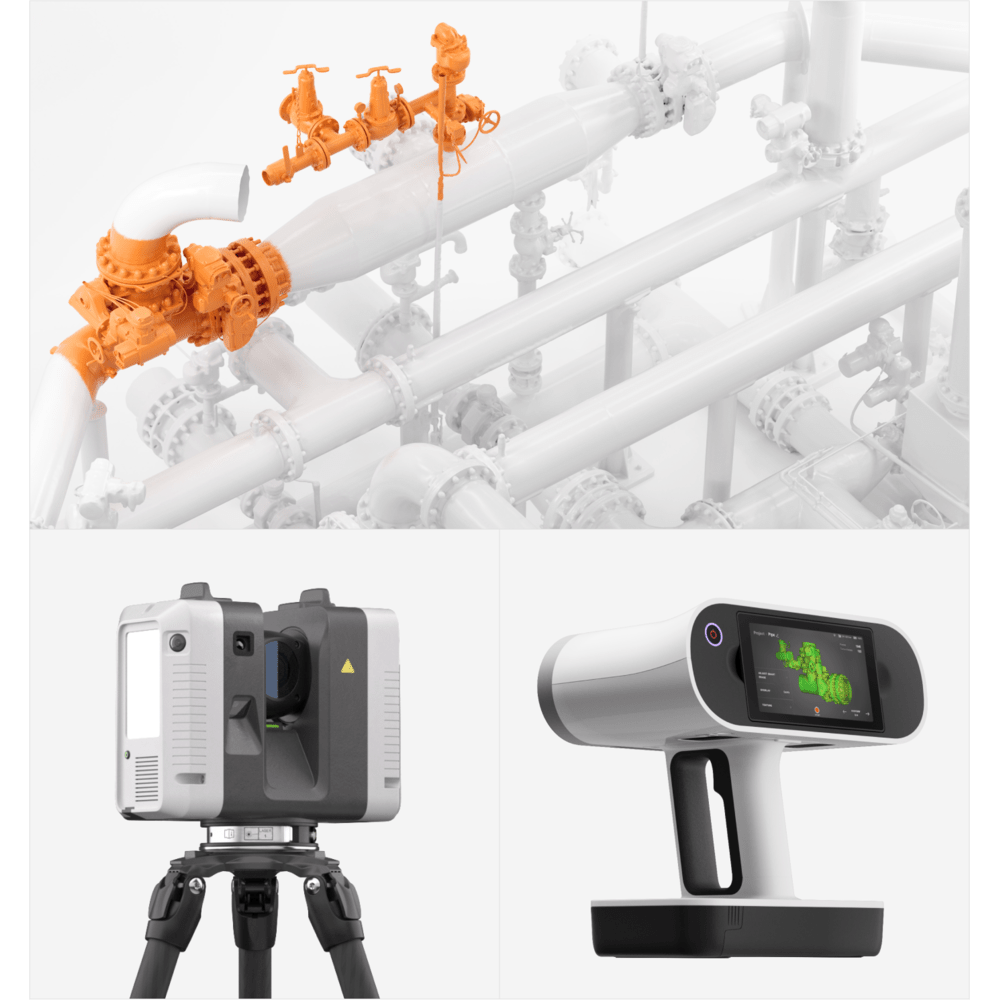
If you want to learn more about the Artec Ray II, reach out today to talk to one of our 3D scanning experts!
